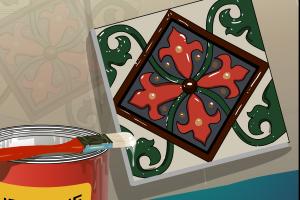Transform Your Space: The Ultimate Guide to Tile Painting

-
Quick Links:
- Introduction
- Why Paint Tiles?
- Types of Tiles Suitable for Painting
- Essential Tools and Materials
- Preparation Steps
- Step-by-Step Painting Process
- Finishing Touches
- Case Studies: Successful Tile Painting Projects
- Expert Insights and Tips
- FAQs
Introduction
Tile painting is an excellent way to refresh the look of your home without the hefty price tag of a full renovation. This guide is designed to provide you with all the necessary information to successfully paint your tiles, transforming them into a stunning focal point of any room.
Why Paint Tiles?
Painting tiles can offer numerous benefits, including:
- Cost-Effectiveness: A fraction of the cost compared to replacing tiles.
- Customization: Choose any color or design to fit your style.
- Eco-Friendly: Extend the life of existing materials instead of discarding them.
Types of Tiles Suitable for Painting
Before you begin, it's crucial to understand which tiles can be painted. Generally, the following tiles are ideal for painting:
- Ceramic Tiles: The most common type of tile, perfect for painting.
- Porcelain Tiles: Durable but requires specific prep work.
- Vinyl Tiles: Can be painted but may not hold up as well.
Essential Tools and Materials
Gather the following tools and materials to get started:
- Tile cleaner
- Sandpaper (fine grit)
- Primer (preferably oil-based)
- Tile paint (acrylic or epoxy)
- Brushes and rollers
- Sealant
Preparation Steps
Proper preparation is key to a successful tile painting project. Follow these steps:
- Clean the Tiles: Remove all dirt, grease, and grime using a tile cleaner.
- Sand the Surface: Lightly sand the tiles to create a texture for the paint to adhere to.
- Apply Primer: Use an oil-based primer to ensure better adhesion of the paint.
Step-by-Step Painting Process
Follow these steps to paint your tiles:
- Choose Your Color: Select a paint color that complements your space.
- Apply First Coat: Use a brush or roller to apply the first coat of tile paint.
- Let It Dry: Allow the paint to cure for the recommended time on the can.
- Apply Additional Coats: Depending on the color and desired opacity, apply one or more additional coats.
Finishing Touches
Once the painting is complete, protect your work with a sealant. This will help to guard against chips and stains.
Case Studies: Successful Tile Painting Projects
Here are some inspiring examples of successful tile painting projects:
- Kitchen Makeover: A homeowner transformed outdated kitchen tiles with a bold color, enhancing the overall aesthetic.
- Bathroom Revamp: A small bathroom received a fresh look with painted floor tiles, making the space feel larger and more inviting.
Expert Insights and Tips
Here are some insights from professionals in the field:
"Always test a small area before committing to a color. This can save you time and effort in the long run." - Jane Doe, Interior Designer
FAQs
- Can I paint over glazed tiles?
- Yes, but proper preparation is essential to ensure the paint adheres well.
- How long does painted tile last?
- With proper care, painted tiles can last several years.
- Is tile painting a DIY project?
- Absolutely! It can be done as a DIY project with the right materials and techniques.
- How do I clean painted tiles?
- Use a mild detergent and soft cloth to avoid scratching the surface.
- Can I use regular paint on tiles?
- Regular paint is not recommended; use paint specifically designed for tiles.
- Do I need to seal the painted tiles?
- Yes, sealing helps protect the paint and extends its lifespan.
- Can I change the color again later?
- Yes, but you will need to follow the same prep and painting processes.
- How much does it cost to paint tiles?
- Costs can vary based on materials and area size, but it's generally much cheaper than replacing tiles.
- What if I make a mistake while painting?
- You can often correct mistakes by sanding and repainting that area.
- What is the best time of year to paint tiles?
- Spring and fall are ideal due to moderate temperatures and low humidity.
Random Reads
- How to change your gamma settings in minecraft
- How to copy files in command prompt
- How to copy files to external hard drive
- How to add custom songs to guitar hero 3 pc
- Unlocking google maps
- Unlocking gps coordinates guide
- How to unclog toilet quickly easily
- How to unclog your septic tank
- How to seed files
- How to get rid of adchoices